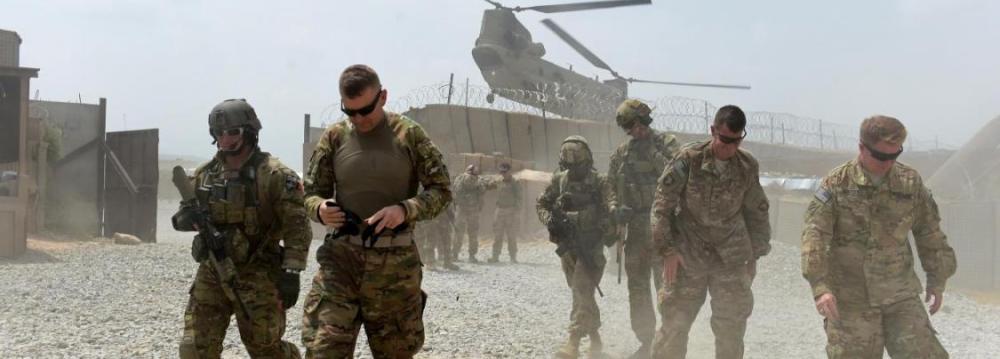Six American troops were killed in Afghanistan on Monday when a suicide bomber on a motorbike struck their patrol near Bagram air base, officials said, the deadliest attack on US forces this year.
US Defense Secretary Ash Carter, who stopped briefly at Bagram on Friday, said the deaths were a “painful reminder” of the dangers still faced by US troops in Afghanistan long after fighting has largely shifted to local forces.
Just last week, the Pentagon warned of deteriorating security in Afghanistan and assessed the performance of Afghan security forces as “uneven and mixed”, Reuters reported.
The Taliban, which claimed responsibility for the strike, remains resilient 14 years after the start of US military engagement in Afghanistan. It has ramped up its attacks this year, inflicting heavier casualties on Afghan security forces.
“Our deepest sympathies go out to the families of these brave Americans who died in service to this vital mission,” Carter said. Two service members were wounded along with a contractor.
The Parwan Province police chief said three Afghan police had also been wounded in the bombing, which was carried out just days after other suicide attacks on Kandahar air base in southern Afghanistan and on a Spanish Embassy guesthouse in the Afghan capital, Kabul.
Bagram, around 40 km north of Kabul, is one of the main bases for the 9,800 US troops left in Afghanistan after international troops ended combat operations last year.
District Governor Abdul Shukur Qudusi said the bomber detonated his explosives near a joint US-Afghan patrol.
The attack underlined the Taliban’s ability to hit high-profile targets linked to the US-backed government, which wants to reopen the peace process aimed at ending the 14-year-long insurgency.
On Monday, Taliban forces in Helmand closed in on the district of Sangin as they tightened their grip on the volatile southern province.
In a report to the US Congress released last week, the Pentagon said casualties among Afghan national defense and security forces, or ANDSF, rose 27% from Jan. 1 to Nov. 15, compared with the same period of last year.
More than 2,300 US troops have died in the Afghan war since the 2001 invasion, but the pace of US deaths has fallen off sharply since the end of formal US combat and a drawdown of American forces.
Pentagon data showed there have been 10 so-called “hostile” deaths of US service members in Afghanistan this year. There have been 10 non-hostile deaths, largely from aircraft crashes.
Sangin Conlfict
But there are conflicting reports as to who controls the remote district in Helmand Province. The Helmand governor and police dismissed Taliban reports that it now controlled Sangin as “totally false”.
Sangin has fallen under Taliban control several times and fighting there has produced significant casualties among Afghan and international forces.
Mohammad Dawood, the district police commander, earlier told BBC the Taliban had completely cut the facility off from the rest of the province, and food and weapons supplies were running low.
Dawood said that, over the past month, security forces in the district had sustained 365 casualties, both dead and injured.
Confusion over the fate of Sangin has been exacerbated by different statements coming from Helmand Governor Merza Khan Rahimi and his deputy, Mohammad Jan Rasulyar.
“Our forces are in Sangin district and there are some clashes, but the district is in our control. We carried out some operations there last night as well,” Rahimi said.
His claim was supported by police in Helmand who said that security personnel had been rescued from a Taliban siege and security measures had been expanded in the area.
Rasulyar said the district had been overrun by the Taliban late on Sunday and only some army facilities had not been taken.
Importance of Sangin
Sangin was once the center of operations for international forces in Afghanistan, a key district that linked Lashkar Gah, the capital of Helmand province, to the province’s northern districts.
Regaining full control of Sangin would increase the Taliban’s mobility in parts of northern Helmand and cut a key supply line for Afghan forces with Lashkar Gah.
Sangin is also a rich opium production center—meaning potential tax revenue for the Taliban from the drugs trade.
The big question now is whether the Taliban can maintain their recent territorial gains in the district. Keeping control of the center of Sangin will not be easy, but resentment of government troops is high in the district following military operations this year, which locals say wrought unwarranted destruction to property.
If the government wants to wrest total control of the area from the militants, it should look to win hearts and minds—a strategy once trumpeted by the foreign forces that controlled this part of the country.


